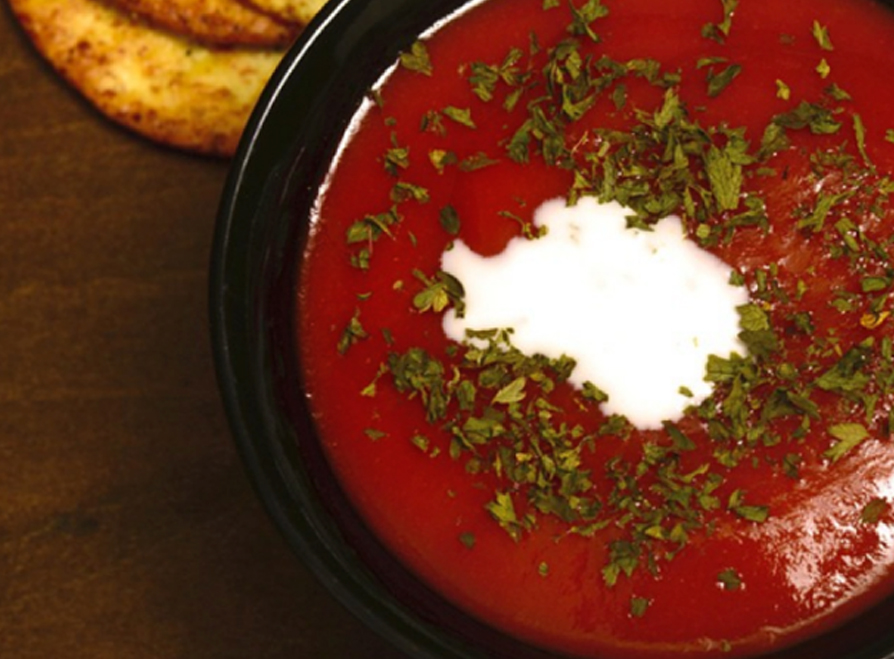
The Mediterranean countries have a long and rich history and their food culture is such, too. The most known representatives of the Mediterranean cuisine are definitely Italy, France, Greece and Spain. At the same time, there are other countries on the east and south coast of the Mediterranean Sea – Turkey, Egypt, Tunisia and Morocco, to name a few that belong into the same food culture. In this article we are going to take a closer look at the things in common in the cuisine of these countries, we are also trying to explain why the Mediterranean cuisine is popular elsewhere in the world and introducing 10 popular Mediterranean dishes.
The Mediterranean countries share a common history and the climate and economic environment influenced by the Mediterranean Sea. What is more, the area surrounding the Mediterranean Sea has always been a natural habitat for olive trees. This has brought about several similarities in the cuisines of the Mediterranean countries and made olives and olive oil the prides of place on the tables of the area. In addition to olives and olive oil, there are two more products common to all countries of the region – wheat (incl. bread and pasta) and grapes and the wine made of it.
You can often hear about the Mediterranean diet, which is thought to have a positive effect on your health. The Mediterranean diet is mostly influenced by the traditional dietary patterns of Greece, Italy and Spain. This classic diet is characterised by the abundant consumption of (extra virgin) olive oil, legumes, unrefined grains and fruit and vegetables. There is also a relatively high proportion of fish and a moderate amount of certain dairy products (yoghurt, cheese) and wine. The Mediterranean diet does not include much red meat.
Such selection of food presumably has several positive effects on our health. Scientists have mostly studied the described diet’s influence on our cardio vascular system. According to the studies, the diet reduces the risk factors for heart diseases since it helps to decrease blood pressure and normalise the cholesterol level. In addition to this, the diet is said to help avoid other chronic diseases, incl. diabetes and cancer. Here the olive oil that is so common in the Mediterranean area is thought to have a vey important role.
The pearls of the Mediterranean cuisine we definitely recommend for you to try out include the following dishes:
- Pizza is one of the most known representatives of the Italian food culture. Classic Italian pizzas are characterised by pure flavours. In Naples, for example, pizza is topped with tomato paste, anchovies and mozzarella. In Sanremo the most traditional pizza topping includes onions fried in olive oil and salted sardines. In Provence they top their pizzas with onion, black olives and anchovies and serve it with olive oil and slices of Parmesan cheese.
- Pasta is also a dish that is often made fresh in Italy and often preferred to be enjoyed with relatively few ingredients. It is very common to serve spaghetti with garlic and olive oil only. The most popular pasta sauce in Italy is a simple sauce made of ripe tomatoes, garlic and herbs (basil or parsley). In Sicily the preferences are a bit more affluent as their pasta often includes fried onion, beacon strips, garlic, olives and anchovies. Sicilians often garnish their pasta with additional olive oil and grated Parmesan cheese.
- In Risotto making the Italians combine food art and food science, and there are certain rules one has to obey. Risotto is made of short grain rice that is first heated with vegetables (e.g. onion and garlic), after which broth is added in increments until the rice is soft and other ingredients cooked. There are hundreds of risotto recipes; besides vegetables they often add seafood, meat, mushrooms and cheese, and season it with herbs. In some regions white wine is added during the cooking process.
- Paella is a Spanish rice dish that in contrast to the Italian risotto is made of long grain rice. Paella often includes chicken, pork and different shellfishes and it is prepared on a special wide shallow pan. Common ingredients also include vegetables, and saffron is added for the colour. In some parts of Spain they also add artichoke hearts, peas, bell pepper, sausages, etc. to their paella.
- Bouillabaisse is a French stew that includes different seafood and vegetables. The rich dish is usually made for a party of eight the least. The seafood added usually includes lobster, sea robin, weever, John Dory, monkfish, conger eel, whiting, common bass and crab. In addition to a list of seafood, bouillabaisse also includes Mediterranean vegetables and herbs, including onion, garlic, tomato, thyme, fennel, parsley, bay and orange peel.
- Niçoise salad or salade niçoise is a colourful and nutritious French salad that includes tomato, tuna, boiled eggs, Niçoise olives and anchovies. The components are added some vinaigrette dressing. This traditional salad can also include some fresh vegetables: young French beans, red bell pepper, shallots, artichoke hearts and other seasonal vegetables. In other countries this salad often includes cooked French beans and boiled potatoes.
- Greek salad is probably the most known dish from the Greek cuisine. The classic Greek salad includes tomato, sliced cucumber, onion, feta cheese and (Kalamata) olives. It is seasoned with salt and oregano and a splash of olive oil. Often green bell pepper and/or capers are added. Outside from its home country, the Greek salad often includes lettuce.
- Moussaka is a Greek dish that includes three (pre-cooked) layers. The bottom layer is made of sliced eggplant fried in olive oil. The middle layer is of ground lamb that has been added either tomatoes or tomato sauce, onion, garlic and seasoning (cinnamon, pimento, black pepper). The top layer is of either béchamel or egg sauce.
- Couscous originates from the southern shore of the Mediterranean Sea (Morocco and Tunisia) and is small-grained wheat semolina in its nature. Couscous is often served with a meat and vegetable stew (tagine). Commonly North-African foods include plenty of spices for colour and flavour: cumin, coriander, saffron, cinnamon, clove, chilli and paprika. At the same time it is also common to prepare couscous with dried apricots and raisins.
- Hummus is a popular bread spread or dip made of chickpeas that originates from Northern Africa (incl. Egypt) but that has now become common in other Mediterranean countries. Hummus is usually made of boiled and smashed chickpeas (or other legumes) that are added some tahini (sesame paste), olive oil, lemon juice, salt and garlic.
If this article gave you some good ideas, visit our Da Vinci Food e-shop to get the ingredients for the Mediterranean dish of your style.
Of course, the classic pastas, pizzas and risottos always wait for you at Da Vinci restaurants.





